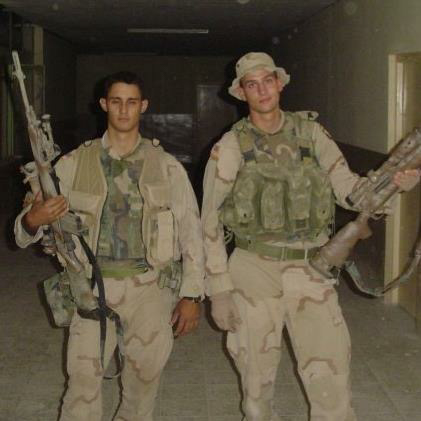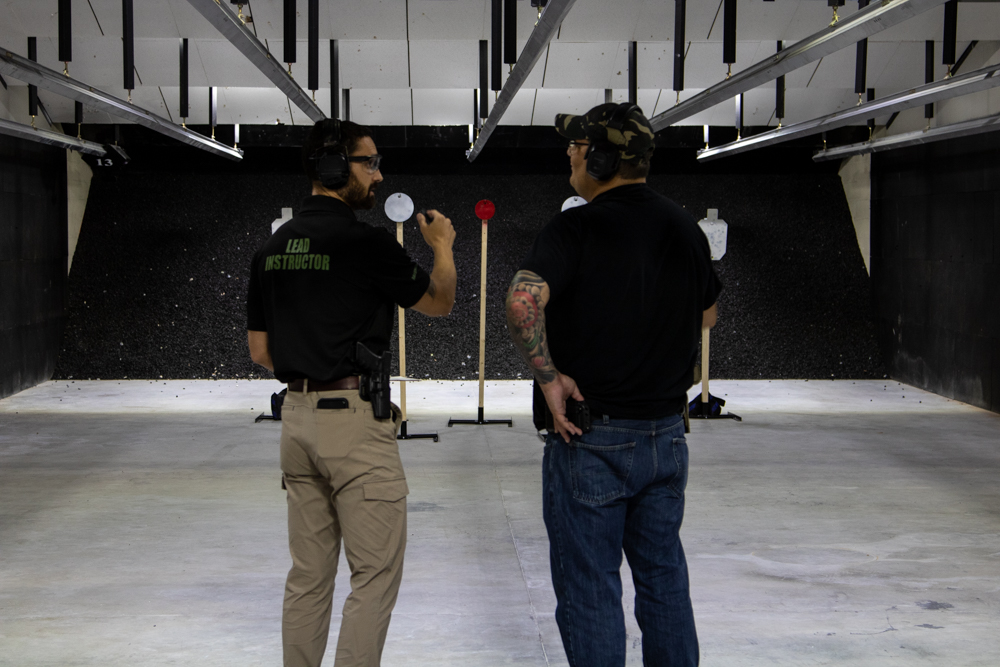Introduction
Having immersed myself in the realm of tactical training and self defense, I’ve seen firsthand how high pressure situations can deeply affect both the body and mind. Whether it’s during an intense firefight, a high-stakes competition, or the split-second decisions required in law enforcement and military operations, understanding the science behind our stress responses is crucial. This article strives to connect scholarly studies with real world examples, offering insights that are not just rooted in science but also practical for those involved in tactical training and self defense.
The Science of Stress
In moments of grave danger, like encountering an armed robbery or facing a potential murder attempt, our minds trigger a sophisticated set of chemical and physical reactions aimed at increasing our odds of staying alive. This mechanism, commonly known as the “fight or flight” reaction, entails the secretion of stress hormones such as adrenaline and cortisol that ready our bodies for swift responses.
Increased Heart Rate and Blood Pressure
One of the most noticeable effects of the stress response is the increase in heart rate and blood pressure. This is primarily mediated by the medial prefrontal cortex (MPFC) and the periaqueductal gray (PAG) in the brain, which send signals to the rest of the body to prepare for quick action (Wager et al., 2009). This system triggers the release of adrenaline (epinephrine) from the adrenal glands, which results in several physiological changes:
- Adrenaline binds to receptors on the heart, causing heart muscle contractions to become stronger and more frequent, thus increasing heart rate.
- It also causes blood vessels to constrict (vasoconstriction), which elevates blood pressure, ensuring that more oxygen and nutrients reach vital organs and muscles, preparing the body for rapid action.
- The activation of the medial prefrontal cortex (MPFC) and the periaqueductal gray (PAG) enhances this cardiovascular response by integrating emotional and cognitive assessments of the threat, further influencing the extent of the physiological reaction.
In my years on the SWAT team, I’ve seen how those who understand and manage this adrenaline surge tend to maintain better control over their actions, making more calculated decisions even in the heat of the moment.
Auditory Exclusion and Tunnel Vision
Another common phenomenon during high-stress encounters is a narrowing of sensory perception, leading to auditory exclusion and tunnel vision. While the research is still evolving, the theory is that in the face of a threat, the brain prioritizes processing information about that threat at the expense of other stimuli. This sensory sharpening helps focus our attention but can also reduce our awareness of the broader environment.
Under stress, the thalamus—responsible for relaying sensory information to the brain—filters out “non-essential” inputs to focus on the threat. This filtering is influenced by the release of noradrenaline:
- Noradrenaline, another stress hormone, acts on the amygdala, which is involved in emotional processing, enhancing the focus on the threat.
- This heightened focus can lead to tunnel vision, where peripheral vision is diminished, and auditory exclusion, where non-threatening sounds are muted.
- Cortisol, released in response to prolonged stress, can further narrow our focus by inhibiting non-essential bodily functions that are not immediately required for survival.
Recalling my time in Iraq, there were moments when the sound of gunfire and explosions seemed to fade into the background as my focus narrowed solely on the task at hand. It was like the rest of the world kinda disappeared. As a sniper that’s probably a good thing. When face to face with a bad guy with a gun, it’s not.
Under stress it is important to process as much information as possible, and make good decisions based on all the data available. If you’re hyper focus on the gun in the bad guy’s hand, you’re going to miss a lot of other valuable details.
Reduced Fine Motor Skill Functioning
Under stress, the body prioritizes gross motor skills necessary for fight or flight, such as running or defending oneself, over fine motor skills. This shift can impair our ability to perform tasks requiring precision and dexterity. The sympathetic nervous system’s activation, responsible for the fight-or-flight response, underlies this phenomenon. Training under stress conditions can help mitigate these effects by improving our ability and skill functionality even when under pressure.
The stress-induced shift towards prioritizing gross motor skills over fine motor skills can be traced back to the body’s allocation of resources under stress:
- The release of cortisol plays a significant role here by increasing blood sugar levels to provide an immediate energy source to large muscle groups.
- Simultaneously, the sympathetic nervous system reduces blood flow to areas not critical for immediate survival, such as the extremities, where fine motor skills are controlled.
- This redistribution of resources is efficient for fleeing or fighting but detrimental to tasks requiring precision, such as aiming a firearm or handling small objects.
Stress and Health Impact
Releasing stress hormones such as cortisol and adrenaline can have lasting effects, especially when someone is constantly under stress. Continuous exposure to stressors can lead to various health problems, like heart disease and mental health issues. According to McEwen & Sapolsky (2006), the physical effects of stress can worsen existing health conditions or even cause serious illnesses, emphasizing the significance of effectively handling stress for both short term performance and long term health.
The chemical processes associated with stress have evolved to deal with immediate threats, but in our modern context, they can be triggered frequently without the physical release that such situations historically entailed:
- Cortisol, over time, can have deleterious effects on the body, contributing to weight gain, hypertension, and a weakened immune system.
- Chronic exposure to high levels of adrenaline and noradrenaline can lead to arterial damage, increasing the risk of heart disease and stroke.
- The brain itself can be affected, with prolonged stress impacting areas like the hippocampus, leading to memory problems and decreased cognitive function.
Seeing comrades struggle with the long-term effects of operational stress underscores the importance of managing our physiological responses, not just for operational efficiency but for our overall health.
Understanding these chemical processes not only enlightens tactical professionals about the “why” behind their training but also emphasizes the need for strategies that mitigate the negative effects of stress. Whether through physical conditioning, stress inoculation training, or techniques to enhance cognitive function under pressure, a deep understanding of the science of stress is a powerful tool in the tactical arsenal.
Tactical Implications and Training Strategies: Practical Solutions
An informed understanding of stress responses not only enriches tactical knowledge but also guides the development of effective training strategies. These strategies can help operatives manage stress, maintain high performance under pressure, and mitigate the adverse effects of stress on health and cognitive function. Below, we delve into practical training examples and exercises tailored to enhance operational readiness in high-stress scenarios.
Stress Inoculation Training
Stress inoculation training is designed to prepare individuals for the psychological and physiological effects of stress through controlled exposure to stressors in a training environment. This approach builds resilience and improves performance under stress.
Examples and Exercises:
- Simulated High-Intensity Scenarios: Create training exercises that mimic real-life operations, such as hostage rescue or active shooter scenarios, using Simunition or airsoft to simulate live fire. Increase the complexity and intensity over time to gradually accustom participants to the stress of combat situations.
- Forced Decision-Making Under Stress: Integrate cognitive challenges into physical drills, requiring operatives to solve puzzles or make rapid decisions while physically taxed. This could involve memorizing codes or symbols during a high-intensity workout and recalling them under simulated enemy engagement.
- Critique and Replay: After high-stress simulations, conduct debriefing sessions to discuss decisions made under pressure. Replay scenarios with different outcomes based on feedback to reinforce learning and adaptability.
Maintaining Fine Motor Skills
The impairment of fine motor skills under stress can critically hinder operational effectiveness. Training should focus on maintaining these skills even in high-adrenaline situations.
Examples and Exercises:
- Precision Drills Under Pressure: Engage in shooting drills that require precision, such as hitting small targets or performing complex weapon manipulations, while under physical stress (e.g., after sprinting or during elevated heart rates).
- Dexterity Challenges: Incorporate tasks that require fine motor control, such as assembling complex objects or performing detailed tasks, in the middle of physical drills. Time constraints and competitive elements can simulate stress.
- Breathing and Focus Techniques: Teach breathing exercises that help lower heart rate and stress levels, improving focus and fine motor control. Practicing these techniques in conjunction with precision tasks can enhance performance under pressure.
Belly breathing and circular breathing are two techniques that work for me personally. I highly encourage students to experiment with these two methods.
Expanding Situational Awareness
Expanding situational awareness is crucial to overcoming the tunnel vision and auditory exclusion that often accompany stress responses. Training should help operatives maintain a broad awareness of their environment, even under extreme stress.
Examples and Exercises:
- 360-Degree Training Environments: Use simulations that require awareness of threats from all directions. This can involve multi-directional threat engagement drills where targets appear unpredictably around the participant.
- Sensory Deprivation and Overload: Train operatives to manage sensory overload by intermittently using blindfolds or earplugs during exercises, then removing them to rapidly adjust to full sensory input. Conversely, overload participants with excessive noise or visual stimuli and train them to focus on critical threats or tasks.
- Team Communication Drills: Develop exercises that require constant communication and coordination under stress, enhancing the ability to process auditory information and maintain situational awareness despite the natural tendency toward auditory exclusion.
By incorporating these training methods and hands on activities into a complete tactical training scheme, students can boost their ability to handle stress, enhance their effectiveness in intense scenarios and sustain their well being and mental acuity in the long run. The aim is to develop a training routine that not only readies individuals for the demands of stress in operations but also provides them with the skills to effectively address and conquer these obstacles.
Conclusion
The instinctive fight or flight reaction plays a crucial role in human survival. However, in the realm of contemporary tactical operations and self defense, having the knowledge and skills to effectively control this response can be the determining factor between life and death. By incorporating findings from neuroscience and stress physiology, tactical training can be elevated to equip individuals not only physically but also mentally and emotionally for the adversities they may encounter.
By consistently exploring and implementing these principles, we can enhance the efficiency of our training approaches, ensuring that in times of crisis, we are ready to perform at our utmost potential.
References
- Wager, T. D., et al. (2009). Brain mediators of cardiovascular responses to social threat, Part II: Prefrontal-subcortical pathways and relationship with anxiety. NeuroImage.
- McEwen, B. S., & Sapolsky, R. M. (2006). Stress and Your Health. The Journal of Clinical Endocrinology and Metabolism.




